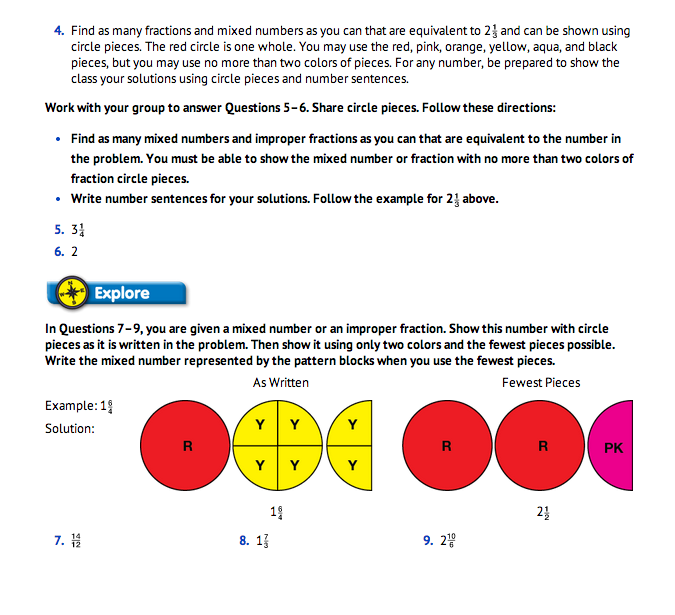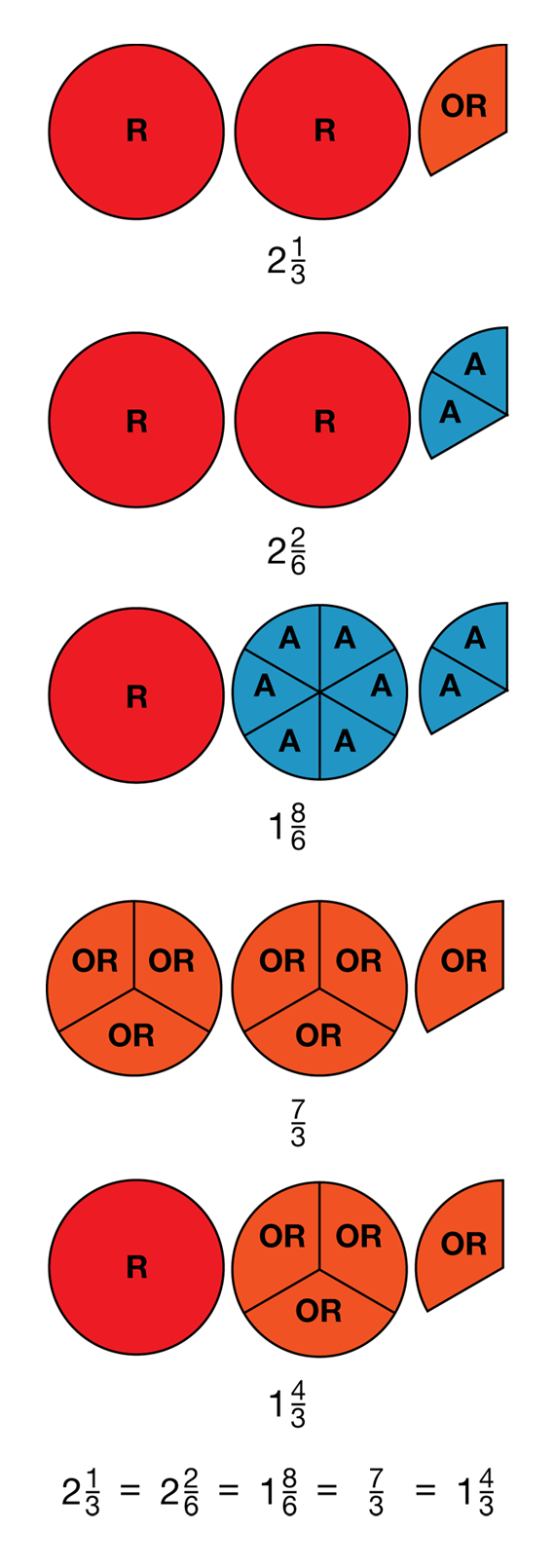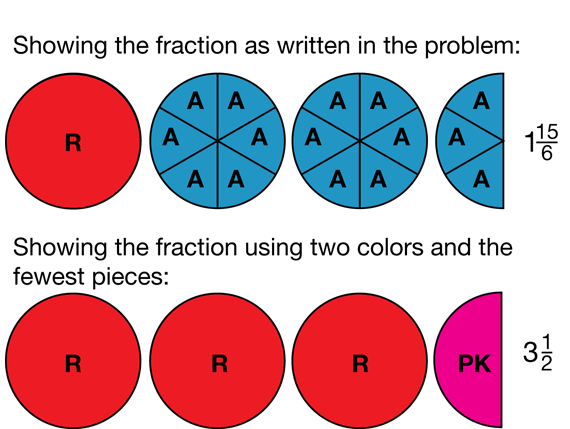Compose and Decompose Mixed Numbers
Est. Class Sessions: 2Developing the Lesson
Part 2: Decompose Mixed Numbers
Use Models to Rename Mixed Numbers. This part of the lesson helps students use models to decompose mixed numbers and find equivalent representations. Understanding equivalence is an important step in many procedures using fractions, including addition of mixed numbers. Students will need to work in groups of three or four in order to have enough pieces for some of the questions.
Direct students to the Many Names for Mixed Numbers section of the Compose and Decompose Mixed Numbers pages in the Student Guide. Use a display set of fraction circle pieces to represent 21/3 as shown on the page.
Ask student groups to follow your example using their pieces. Once they have shown 21/3 with circle pieces, ask them to use the pieces to find as many fractions and mixed numbers as possible that are equivalent to 21/3 (Question 4), using only one or two colors of circle pieces in any one mixed number or improper fraction. Encourage students to write a number sentence that shows the equivalence of the various representations. Figure 2 shows five such representations for 21/3 as well as a proper number sentence. Display students' number sentences.
Use Question 5 to guide students through the same procedure for 31/4. Remind students that they may use at most two colors of circle pieces to represent the mixed numbers. In Question 6, students follow the same directions and find different representations for a whole number. Figure 3 shows three ways to represent the number 2 using fraction circle pieces: 2 = 4/2 = 14/4.
Rename Mixed Numbers in Simplest Form. Assign Questions 7–9. Students represent improper fractions and mixed numbers with circle pieces. First students represent the fraction as it is written in the problem. Then they show the fraction using only two colors and the fewest pieces possible. They write the mixed numbers represented by the circle pieces using the fewest pieces. Following these restrictions forces students to write mixed numbers with proper fractions in simplest form. For example, to represent 115/6 with two colors and the fewest pieces, students must use pink and red pieces, as shown in Figure 4, 115/6 = 31/2. A different example is shown in the Student Guide.
















